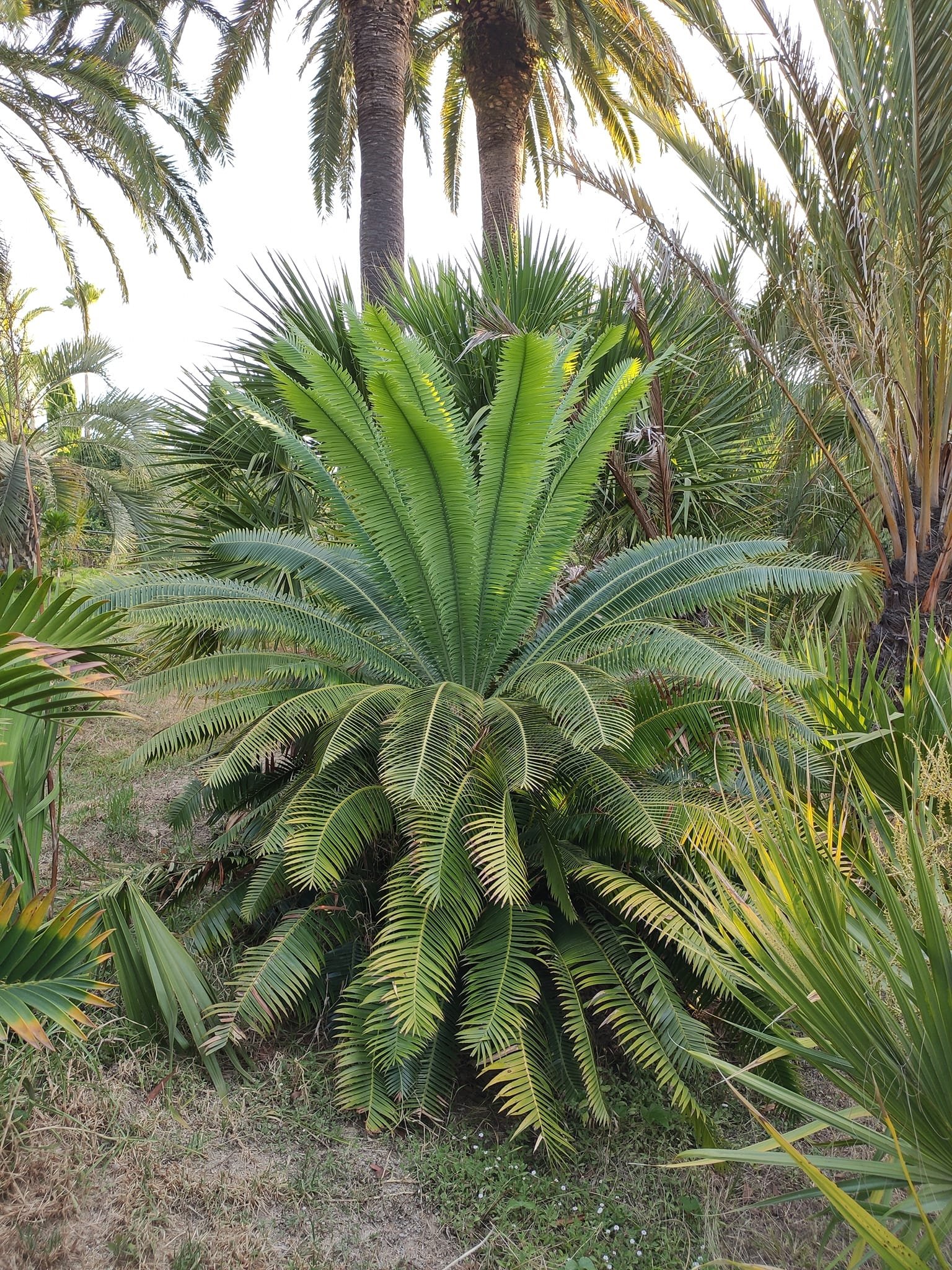
Dioon Spinulosum | Giant Dioon
Dioon spinulosum, commonly known as the Giant Dioon, is a slow-growing, evergreen cycad native to the tropical rainforests of southeastern Mexico, including Veracruz and Oaxaca. It is one of the largest cycads in the world, capable of reaching heights of up to 15 meters (49 feet) in optimal conditions, with a thick, columnar trunk that can grow up to 40 cm (16 inches) in diameter.
The plant's crown is adorned with arching, pinnate fronds that can grow 2–3 meters (6.5–10 feet) long. Each frond is composed of numerous, spiny-edged, leathery leaflets that are arranged symmetrically, giving it a feathery and elegant appearance. The leaflets are a deep green, with a glossy surface, and the spiny edges give the plant its name, "spinulosum," which means "small spines."
Dioon spinulosum is dioecious, meaning individual plants are either male or female. The male plants produce elongated cones, while the female plants develop larger, rounder cones that can reach up to 50 cm (20 inches) in length. These cones contain seeds that are encased in a fleshy covering and are often dispersed by animals.
This species thrives in well-draining soils and prefers warm, humid conditions, making it an excellent choice for tropical and subtropical gardens. It is often grown as an ornamental plant for its striking, prehistoric appearance and ability to create a dramatic focal point in landscapes. Dioon spinulosum is also relatively low-maintenance, drought-tolerant, and resistant to pests and diseases, contributing to its popularity among gardeners.
In its natural habitat, the Giant Dioon is considered a living fossil, representing one of the oldest seed plant lineages. It plays a critical ecological role, supporting biodiversity and serving as a food source for wildlife. However, habitat loss and overharvesting have led to its listing as a species of concern, and conservation efforts are in place to protect its populations.
Dioon Spinulosum | Giant Dioon
Dioon spinulosum, commonly known as the Giant Dioon, is a slow-growing, evergreen cycad native to the tropical rainforests of southeastern Mexico, including Veracruz and Oaxaca. It is one of the largest cycads in the world, capable of reaching heights of up to 15 meters (49 feet) in optimal conditions, with a thick, columnar trunk that can grow up to 40 cm (16 inches) in diameter.
The plant's crown is adorned with arching, pinnate fronds that can grow 2–3 meters (6.5–10 feet) long. Each frond is composed of numerous, spiny-edged, leathery leaflets that are arranged symmetrically, giving it a feathery and elegant appearance. The leaflets are a deep green, with a glossy surface, and the spiny edges give the plant its name, "spinulosum," which means "small spines."
Dioon spinulosum is dioecious, meaning individual plants are either male or female. The male plants produce elongated cones, while the female plants develop larger, rounder cones that can reach up to 50 cm (20 inches) in length. These cones contain seeds that are encased in a fleshy covering and are often dispersed by animals.
This species thrives in well-draining soils and prefers warm, humid conditions, making it an excellent choice for tropical and subtropical gardens. It is often grown as an ornamental plant for its striking, prehistoric appearance and ability to create a dramatic focal point in landscapes. Dioon spinulosum is also relatively low-maintenance, drought-tolerant, and resistant to pests and diseases, contributing to its popularity among gardeners.
In its natural habitat, the Giant Dioon is considered a living fossil, representing one of the oldest seed plant lineages. It plays a critical ecological role, supporting biodiversity and serving as a food source for wildlife. However, habitat loss and overharvesting have led to its listing as a species of concern, and conservation efforts are in place to protect its populations.